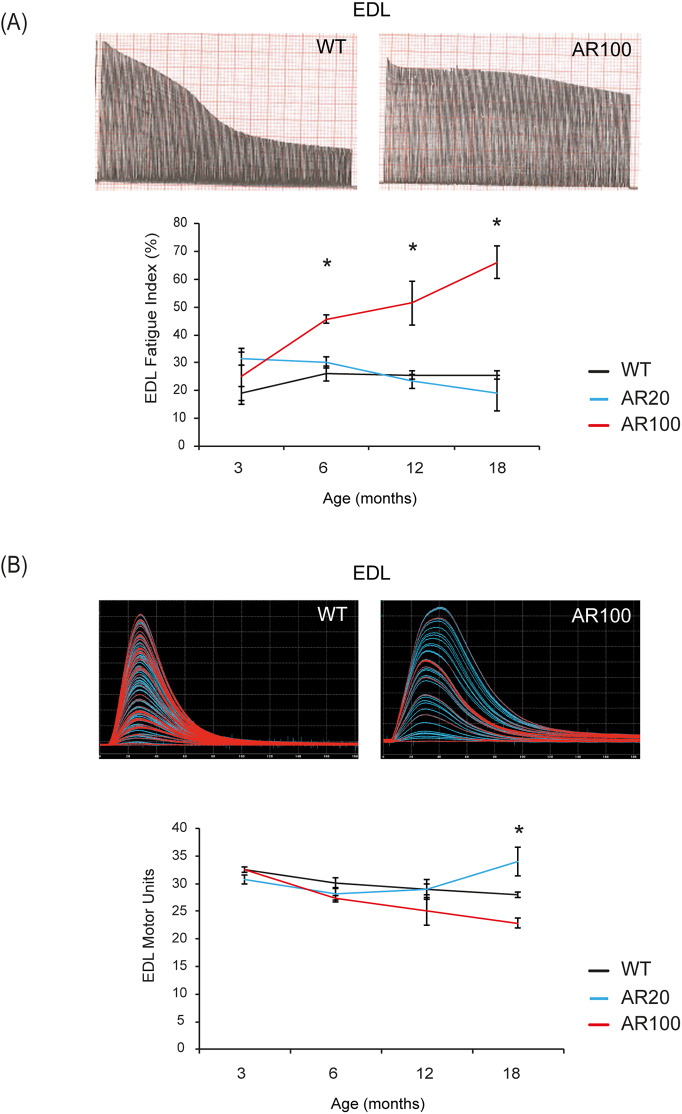Fig. 2.
Changes in innervation and fatigue characteristics of hindlimb muscle in SBMA mice. (A) Representative EDL fatigue traces from WT and AR100 are shown. The fatigue index (FI) values of EDL muscles in AR100 mice were significantly higher than WT and AR20 mice mice at 6, 12 and 18 months of age. EDL muscles in AR100 mice became more resistant to fatigue as disease progressed. (B) EDL motor unit number was the same in WT and AR100 mice at 3 months of age. From 6 months of age, motor unit number was reduced in AR100 mice compared to WT mice and there was a gradual decline with ageing. Statistical analysis was performed using one-way ANOVA followed by the Student–Newman–Keuls and Tukey's Honestly Significantly Different post hoc tests (n≥5 animals, *P<0.05). Error bars represent s.e.m.

